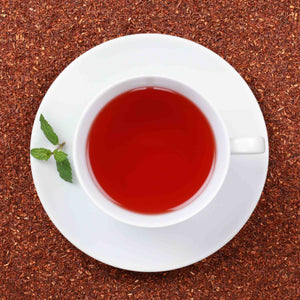Arab wealth
Nov 02, 2020
Meditation around Mint Tea
Richness of the Arabic language
For all of us at Maison NANA1807, Arabic is the most eloquent and beautiful language - not only in its vocalization and diction, but also in its writing.
So we are preparing Arabic Calligraphy Workshops around a Mint Tea for next year ... when COVID will allow us to resume our invitations.
With more than four hundred million speakers worldwide, Arabic is the official language of twenty-six countries, making it the fifth most spoken language in the world behind English, Mandarin, Spanish and Hindustani.
It is also the language of spiritual expression of nearly two billion Muslims around the world ... Arabic is also one of the six official languages of the United Nations. And it is the most popular language in the world in terms of the beauty of its writing.
Arabic is also one of the most widely used languages in the world. In fact, Arabic is the source of the words our fellow citizens use to describe two of their most popular drinks: coffee and alcohol, when they are not drinking our Mint Teas
The word coffee derives from " Qahwa " (قهوة), while the word alcohol comes from the Arabic " Kahul ”( كحول ) . These are just two popular examples of the influence of Arabic on our French language.
The Majesty of his writing
In Arabic, words are written and read from right to left ... while numbers are written and read from left to right .. This is confusing if you are not a native speaker, and you may find it difficult to juggle your left / right brain at the same time ...!
According to linguists specializing in the Arabic language, a single word written in Arabic has three meanings, seven pronunciations and twelve different interpretations ...
Its writing system does not follow an alphabet but Al'Abajadia (in Arabic: الأبجدية ) or literally a Abjad. An Abjad is a system where each letter represents a consonant only and never a vowel, which forces vowels to be added using vowel marks.
This Abjad is made up of twenty-eight letters, and each letter has a specific arabesque shape depending on its location in a word. So there are four different ways to write each letter:
- the isolated form that never changes
- the initial form of the first syllable of a word
- the middle shape for the middle of a word
- the final form to end a word
In all, you will have 112 characters to memorize to learn to read Arabic ... Thanks to mnemonics, this initial learning is the easiest.
In the contemporary world, there are actually three formats of the Arabic language:
- Classical Arabic (the literary, poetic form of Arabic ... with its most refined version - known as Qu'ranic - in which the Koran is recited)
- Modern Standard Arabic (used as a worldwide and universal standard - in newspapers, novels and textbooks. This literary variety is used in writing and in most formal speeches)
- Dialectal Arabic (the spoken version of Arabic which varies by region, country, and tribe)
So imagine a population of different cultures, in 26 countries with geographical borders, all speaking the same language… Imagine this possible here, in Europe ...!
The richness of its Vocabulary
The Arabic language has a word to express everything and the detail of everything, for everything Every feeling has a completely different implication and essence.
Here is an illustrative example of the richness of the Arabic vocabulary with the verb "to love":
- حب - Simple love
- عشق - Deep love
- غرام - Unbreakable love
- هوى - Quick love
- نزوة - The love that goes
- شوق - Distant love
And you will find the richness of this lexical palette, in our recent meditation around Mint tea , which we devoted to the theme: " From love to madness around Mint Tea "
In addition, there are 80 Arabic words to designate honey, 100 different words to designate a camel, 200 words for the lion and more than 4000 expressions to describe sadness ...
For each of these words, we invite you to discover them for yourself and share them on our social networks ... And we offer a box of MAISON NANA1807's Mint tea for the first of you to give us the translation of each word.
The Arabic language has also influenced several modern languages, in particular: Spanish, Portuguese, Swahili, Persian, Turkish, Indonesian, Malay, English, Italian, Urdu and even our favorite language - French.
One of the greatest poets in the history of the world was born in the Arabian Peninsula and poetry has always been the pride of the Arabs ... as they eloquently competed in ancient poetic contests.
The Koran is the most wonderful linguistic miracle in itself. Taking the example of a single Sura - the shortest and composed of 3 Ayates (verses) and only 10 words - the exegetes find forty different literary devices. Ask your French teacher or your friend poet to explain this unthinkable literary majesty to you.
The more linguists have immersed themselves in the linguistic construction of the Koran, the more they are stunned and astonished at what they get from it .... And the more astonishing ... if a word is changed or a syntax recomposed, the magical effect of reading the Koran disappears ... just like a cryptx ...
The beauty of Arabic is expressed at its peak in the Quran, as people have failed to match the Quran in the following areas:
- Literary form
- Linguistic genre
- Selection and arrangement of words
- Selection and arrangement of particles
- Phonetic superiority
- Frequency of rhetorical devices
- Level of informativeness
- Concision and flexibility.
A three letter root can be used to derive all possible words with related meanings. Arabic is unique because the subtle shift in meaning comes from just adjusting a single accent, making it remarkably ... exotic and mysterious.
Arabic is also known as a language which develops the vocal strength which is predominant in singers. The fact that the Arab is not well known in the Western world should perhaps be taken as a point of regret. In fact, the history of the Arabic language is one that spans centuries, long before the advent of the Christian era and until modern times.
Around Mint Tea , you will agree that no language can match the eloquence of spoken and written Arabic. It is a miracle for the heart, soul and spirit.

Taste the Difference & Share the Experience!





3 comments
Chère Madame,
Merci pour commentaire et votre appréciation
Nous espérons vous revoir bientôt pour vous faire découvrir nos nouvelles recettes de Thé à la Menthe
Courtoisement,
Engie, Emma & Adam
رائع
J’aime la langue arabe, je la pratique…avec ce texte je la redécouvre…et maintenant l’adore.
Merci pour le partage.
Magnifique !